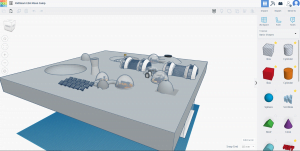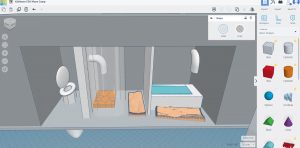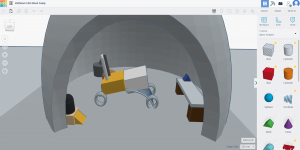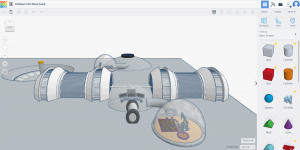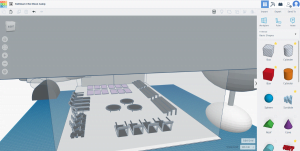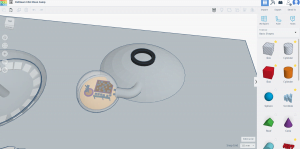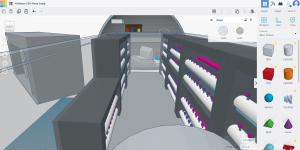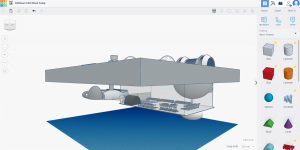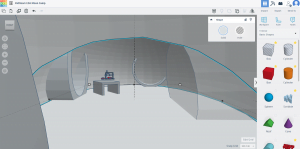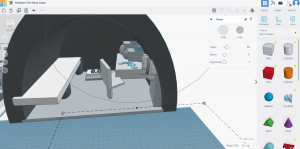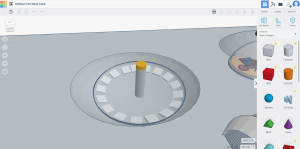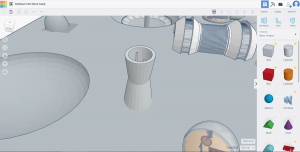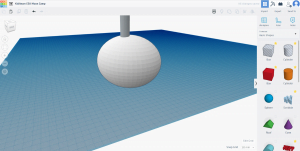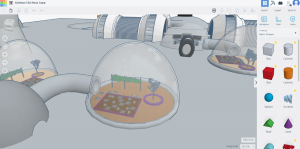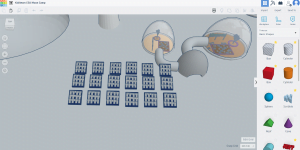|
Project description
Kidibot Moon Camp is a fully functional Moon base.
Our objectives:
– Science experiments
– Early Warning System against life threatening asteroids for Earth
– Rocket Launch Base for Inter-Planetary launches (to Mars, to asteroid mining)
– Mining HQ using Moon Raw Materials
– Travel accommodation for space travel tourists
– Biological Backup System for Earth Seeds and Earth DNA (due low temperatures)
– Quantum Computers Data center (due low temperatures)
Pres-Requisites:
– to be self-sustaining, medium to long term we strive to become a profit center. Public and private funding, with an open architecture, to allow future additions and interactions (modular bases)
Initially, the team will consist in 6 permanent residents (that will rotate periodically) + 2 guests . Later on, the infrastructure will grow to support more inhabitants, both permanent and temps
We’ll use AI and robotic work to continue to expand. All developments will take into consideration constant future residence increase
For safety reasons, we’ll have multiple back-ups to critical and non-critical systems.
LIVING & WORKING
– living quarters
– science labs
– gym
– bath
– medical lab
– storage
– garages for Moon Rovers, equipped with repairing docs and tools
– 3d printing modules (including bio-printers for human tissues)
EXTERNAL DEPENDENCIES
– spaceport – where supply rockets will land
– Deep Space Telescope
– Multi Radar system (incoming/outgoing spacecraft, debris, meteorites, )
– communication with Earth
– satellite receiving from Geo-Stationary Moon Orbiter Satellites (Galileo Moon)
– Solar Farm Mirrors (on soil)
|
|
Where do you want to build your Moon Camp?
Amundsen Crater
Why did you choose this location?
Moon South Pole should have more water, not only H20 locked in regolith, but also ice in shadowy zones.
Also, high % of sunlight, close to Shackelton rims + direct vision to Earth (for communication)
Safe distance from the largest known impact formations in the Solar System (good for spaceport, 1% inclination) + easy to reach deeper into Moon crust for searching minerals + better protection from incoming meteors + is easier to dig in areas where is regolith vs basalt. Due past heavy meteor bombardment, -> higher chances to find cracks, which will provide shelter & access to resources
How do you plan to build your Moon Camp? Which materials would you use?
We’ll use the terrain (craters rims) to better protections from radiations + micro-meteors + lower building costs.
We’ll use regolith, combined with polymeric clay to create the protective outer-shell, near craters rims.
Also, we’ll melt the basalt and the regolith using concentrated light
For underground structure, we’ll use light modular bases, inflatable + metallic structure, from Earth (first step, then we’ll create ourselves organic polymeric structures) + modular joints
Tools: Synthetic Diamond drills + small chemical explosions + Mirror Farm Focal Point (Mirror Focal points temperature – 3000-3500 Celsius, Basalt melting temperature – 1250 Celsius)
Explain how your Moon Camp will provide the astronauts with:
|
|
Using the Mirror Farms, we’ll heat the regolith, to get half a litter of water from 1 m3 of regolith
From South Pole, we’ll search for ice water in the nearby rims
Of course, we’ll recirculate all the water (Dune style)
|
– Plants growing in the greenhouses (Alpha, Beta and Gamma) – Potatoes, fruits
– 3D Printed Meat, based on organic materials growing in the Food Lab
– Hydroponic cultures, using water, minerals from lunar soil and 400-700 nano-meters wavelength
|
– nuclear fission module power-plant small gas-cooled fission reactor with 1 MWe
– solar photovoltaic panels
– solar mirrors farm near the base (will collect and use the solar light to produce heat for construction in the 1st phase, heat the base and ob
|
To extract the oxygen, we’ll use molten salt electrolysis. The lunar regolith is placed in a metal basket with molten calcium chloride salt and heated to about 1,742 degrees Fahrenheit with the mirror farm. The regolith is still solid, an electrical current is applied and extracts the oxygen.
CO2 from expiration will be converted back to O2 by greenhouse circuit plus the new Caltech Reactor.
Initially, we’ll take to moon liquid nitrogen, as the base gas for breathing, to mix with o2. Also, some of the nitrogen can come as a byproduct from heating regolith for obtaining water
|
|
Describe a day on the Moon for one of your Moon Camp astronauts
Wake up in the sleeping quarters. The team will rotate, at least one astronaut will be always awake and monitor the sensors and equipments. Permanence.
They go to bathroom, wash with recycled water, chemical soap, hot air.
Exercise to the gym.
Eat at cafeteria.
Go to work (lab, mining, prospecting)
– some will jump to their rovers and move around the base to set up sensors and relays, to deploy drones to search for resources
– running experiments
– grow plants in the underground and above ground greenhouses
– communicate with Earth base
– periodic emergency drills
– run system diagnostics (especially for sensors)
– Checking the incoming/outgoing traffic schedule (tourists, supplies)
– Supervise robotic construction expansion (drilling, mining, searching for materials, building new modules, etc)
– Once the surface minerals deposits are found, industrial mining will begin. Raw materials will be taken to storage units, then refining will follow, for use.
– at least 1 astronaut will use the quantum computing device
– being on Moon, experiments with solar wind will be much easier. Solar Kyte experiment, to further check the viability of the interplanetary solar wind transportation
Small pauses during work
Lunch
Work again
Dinner
Free personal time – talking with families, entertainment, socializing
Going to bed – we’ll use European CET GMT + 1 time, so everybody sleeps on existing circadian track.
To keep their sanity, they have to be constant monitor, be in contact with other human beings, live a balanced life
|



